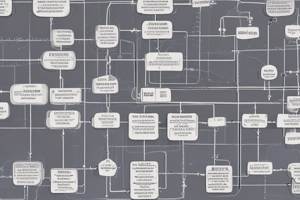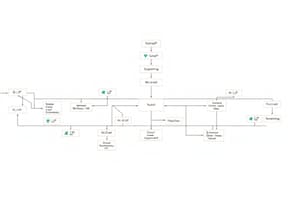Podcast
Questions and Answers
Match the following sequence diagram components with their descriptions:
Match the following sequence diagram components with their descriptions:
Lifeline = Represents an object or participant in the sequence diagram Message = A communication between lifelines Activation Bar = Represents the duration of an action or operation Loop = A repetition of a sequence of messages
Match the following sequence diagram notations with their meanings:
Match the following sequence diagram notations with their meanings:
-> = Synchronous message (caller waits for response) ->> = Asynchronous message (caller does not wait for response) << = Return message Note: = Additional information or comment
Match the following sequence diagram elements with their purposes:
Match the following sequence diagram elements with their purposes:
Alt Fragment = Represents a conditional sequence of messages Opt Fragment = Represents an optional sequence of messages Par Fragment = Represents parallel sequences of messages Loop Fragment = Represents a repetition of a sequence of messages
Match the following sequence diagram components with their roles:
Match the following sequence diagram components with their roles:
Match the following sequence diagram concepts with their descriptions:
Match the following sequence diagram concepts with their descriptions:
Flashcards are hidden until you start studying
Study Notes
Sequence Diagram Components
- There are different types of sequence diagram components, notations, elements, and concepts that serve specific purposes and roles.
Component Matching
- Sequence diagram components need to be matched with their descriptions, notations with their meanings, elements with their purposes, and concepts with their descriptions.
Importance of Matching
- Accurate matching is crucial to understand the interactions and behaviors of objects in a system, as depicted in a sequence diagram.
Components, Notations, Elements, and Concepts
- Sequence diagram components refer to the visual representations of objects or entities in a system.
- Notations are the symbols and icons used to represent these components.
- Elements are the building blocks of a sequence diagram, such as lifelines, messages, and combined fragments.
- Concepts are the underlying ideas and principles that govern the behavior of sequence diagrams.
Studying That Suits You
Use AI to generate personalized quizzes and flashcards to suit your learning preferences.




